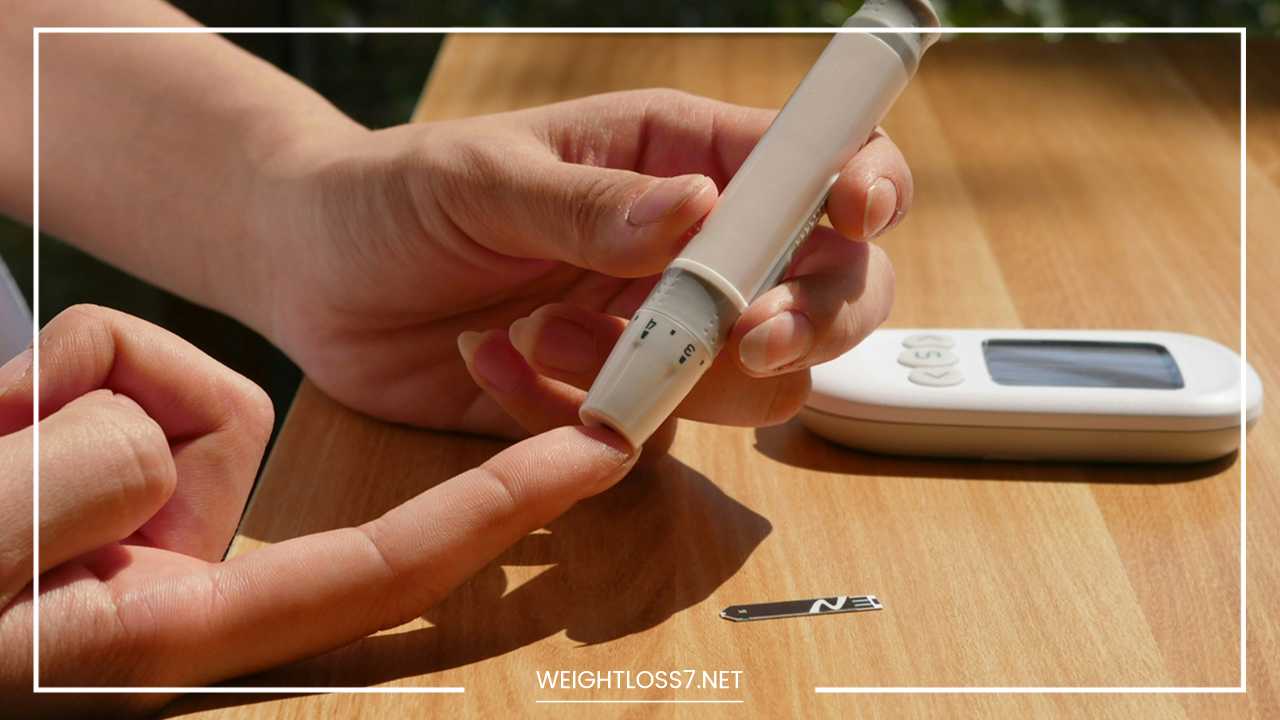How to Prevent Diabetes

Prevent Diabetes
How to Take Control of Your Health: Practical Tips to Prevent Diabetes
Diabetes is a serious chronic condition affecting millions globally. While some forms of diabetes aren’t preventable, there are significant steps you can take to reduce your risk and improve your overall well-being.
This comprehensive blog post delves into practical strategies for preventing diabetes, empowering you to take charge of your health.
Understanding the Different Types of Diabetes: Tailoring Your Approach
Before exploring preventative measures, it’s crucial to understand the different types of diabetes:
- Type 1 Diabetes: An autoimmune disease where the body attacks insulin-producing cells in the pancreas. It’s not preventable, but treatments are available to manage blood sugar levels.
- Type 2 Diabetes: The most common form, where the body either resists insulin or doesn’t produce enough. This can often be prevented or delayed through lifestyle changes.
- Gestational Diabetes: Develops during pregnancy and usually disappears after childbirth. However, it increases the risk of developing type 2 diabetes later in life.
This blog post primarily focuses on preventing type 2 diabetes, as it offers the most significant opportunity for intervention. However, some of the strategies mentioned can also be beneficial for managing other types of diabetes and improving overall health.
Embrace a Balanced and Nutritious Diet: Fueling Your Body Right
Diet plays a pivotal role in diabetes prevention. Here are key dietary tweaks to consider, along with explanations for their benefits:
- Limit Sugary Drinks and Processed Foods: Sugary drinks like soda and processed foods high in refined carbohydrates can cause blood sugar spikes. These spikes put stress on your body’s insulin response and can contribute to insulin resistance over time. Opt for water, unsweetened tea/coffee, and whole grains instead. Water keeps you hydrated, while unsweetened tea and coffee offer antioxidants without the added sugar crash. Whole grains release sugar slowly into the bloodstream, promoting steadier blood sugar levels.
- Choose Complex Carbs Over Simple Carbs: Complex carbohydrates, like those found in whole grains, fruits (with the skin on for added fiber), and vegetables, are packed with fiber. Fiber slows down digestion and sugar absorption, preventing blood sugar spikes. Simple carbohydrates, like white bread, pastries, and sugary cereals, lack fiber and cause rapid rises in blood sugar levels.
- Fill Your Plate with Fiber: Fiber is a powerful tool for diabetes prevention. It helps regulate digestion, promotes satiety (feeling full), and slows down blood sugar absorption. Include plenty of fruits, vegetables, legumes (beans, lentils), and whole grains in your diet.
Pro Tip: Explore different types of high-fiber fruits and vegetables. Berries, apples with skin, leafy greens, and cruciferous vegetables like broccoli and cauliflower are all excellent sources of fiber.
- Prioritize Lean Protein: Lean protein sources like fish, poultry, and beans help with feeling full and maintain stable blood sugar levels. Protein takes longer to digest than carbohydrates, promoting sustained energy levels and reducing cravings. Limit red meat and processed meats, as they have been linked to an increased risk of diabetes.
- Healthy Fats Are Your Friends: Don’t shy away from healthy fats like those found in avocados, nuts, seeds, and olive oil. These fats promote satiety, support heart health, and may improve insulin sensitivity. They are also essential for nutrient absorption from certain vitamins.
Remember: Consistency is key. Small, sustainable dietary changes can significantly impact your health in the long run. Don’t overwhelm yourself with drastic changes. Gradually introduce healthier options and find ways to make healthy eating enjoyable.
Get Moving: The Power of Physical Activity for Diabetes Prevention
Regular physical activity is a cornerstone of diabetes prevention. Here’s how to incorporate movement into your routine and maximize its benefits for blood sugar control:
- Aim for at Least 150 Minutes of Moderate-Intensity Exercise Weekly: This could include brisk walking, swimming, cycling, dancing, or any activity that gets your heart rate up and makes you sweat moderately. The key is to find activities you enjoy and can stick with consistently.
- Strength Training is Crucial: Don’t underestimate the power of strength training. Include strength training exercises 2-3 times a week to build muscle mass. Muscle helps the body utilize blood sugar more effectively, improving insulin sensitivity and blood sugar control. Bodyweight exercises, free weights, or resistance bands are all effective options.
- Find Activities You Enjoy: You’re more likely to stick with an exercise routine if you find activities you genuinely enjoy. Explore different options like group fitness classes, dancing, hiking, swimming, or team sports. The key is to find something that gets you moving and keeps you motivated.
- Make Movement a Habit: Don’t limit yourself to structured workouts. Incorporate movement throughout your day. Take the stairs instead of the elevator, park further away from your destination and walk, or do some stretches during work. Stand up and move around every 30 minutes to avoid prolonged sitting. Take active breaks with short walks or bodyweight exercises.Involve your family or friends in physical activities – make it a fun and social experience.
Remember: Start gradually and gradually increase the intensity and duration of your workouts as your fitness improves. Don’t be discouraged if you can’t achieve 150 minutes right away. Begin with smaller amounts of exercise and build up your stamina over time. Listen to your body and take rest days when needed.
Manage Weight for Optimal Health: A Holistic Approach
Maintaining a healthy weight significantly reduces the risk of developing type 2 diabetes. Here are some tips to achieve and maintain a healthy weight, along with strategies to overcome challenges:
- Focus on Long-Term, Sustainable Weight Loss: Crash diets are often unsustainable and unhealthy. They can lead to yo-yo dieting, which can be even worse for your health. Aim for gradual weight loss of 1-2 pounds per week through healthy eating and exercise. This approach is more likely to lead to long-term success.
- Track Your Progress: Keeping a food diary or using a weight-loss app can help you stay accountable and monitor your progress. Logging your food intake can help you identify areas for improvement and track your calorie consumption. There are many apps available that offer features like calorie tracking, recipe suggestions, and motivational tools.
- Mindful Eating: Pay attention to your hunger and fullness cues. Eat slowly and savor your food. Stop eating when you’re comfortably full, not stuffed. This practice can help you avoid overeating and make healthier choices.
- Manage Stress: Chronic stress can contribute to weight gain and insulin resistance. Find healthy ways to manage stress, such as yoga, meditation, deep breathing exercises, or spending time in nature.
- Seek Support: Don’t go it alone. Talk to your doctor, a registered dietitian, or a certified personal trainer for personalized guidance and support. Consider joining a weight-loss support group to connect with others on a similar journey.
Remember: Weight management is a journey, not a destination. There will be setbacks, but consistency and self-compassion are key to success. Celebrate your non-scale victories, like increased energy levels or improved sleep, alongside weight loss milestones.
Don’t Forget the Power of Sleep for Blood Sugar Control
Adequate sleep is essential for overall health, including diabetes prevention. Here are some tips to improve your sleep hygiene and promote better sleep quality:
- Establish a Regular Sleep Schedule: Go to bed and wake up around the same time each day, even on weekends. This helps regulate your body’s natural sleep-wake cycle (circadian rhythm).
- Create a Relaxing Bedtime Routine: Wind down before bed with calming activities like reading, taking a warm bath, listening to calming music, or practicing relaxation techniques like deep breathing or progressive muscle relaxation. Avoid stimulating activities like watching TV or using electronic devices for at least an hour before bed. The blue light emitted from electronic devices can interfere with sleep.
- Optimize Your Sleep Environment: Ensure your bedroom is dark, quiet, and cool for optimal sleep. Invest in blackout curtains, earplugs, and a comfortable mattress and pillows.
- Limit Caffeine and Alcohol Intake: Avoid caffeine and alcohol close to bedtime, as they can disrupt sleep patterns.
- See a Doctor if Needed: If you experience chronic sleep problems like insomnia or sleep apnea, consult your doctor to rule out any underlying medical conditions and get appropriate treatment.
Remember: Aim for 7-8 hours of quality sleep each night. When you’re well-rested, your body functions more efficiently, including regulating blood sugar levels.
Embrace Stress Management for Overall Well-Being
Chronic stress can wreak havoc on your health, including increasing your risk of diabetes. Here are some strategies to effectively manage stress:
- Identify Your Stressors: The first step is to identify what causes you stress. Is it work, relationships, finances, or something else? Once you know your triggers, you can develop coping mechanisms to deal with them effectively.
- Practice Relaxation Techniques: Techniques like yoga, meditation, deep breathing exercises, and progressive muscle relaxation can help calm your mind and body and reduce stress levels. There are many apps and online resources available to guide you through these practices.
- Get Regular Exercise: As mentioned earlier, physical activity is a powerful tool for stress management. Regular exercise releases endorphins, which have mood-boosting effects and can help combat stress.
- Connect with Loved Ones: Having strong social connections can provide emotional support and help you cope with stress. Spend time with loved ones, join a social club, or volunteer in your community. Giving back can be a rewarding way to connect with others and reduce stress.
- Make Time for Hobbies and Activities You Enjoy: Engaging in activities you find enjoyable is a great way to de-stress and improve your overall well-being. Make time for hobbies, whether it’s reading, playing music, spending time in nature, or anything that brings you joy.
- Seek Professional Help: If you’re struggling to manage stress on your own, consider seeking professional help from a therapist or counselor. They can equip you with additional tools and strategies for managing stress effectively.
Remember: Stress management is an ongoing process. Experiment with different techniques and find what works best for you. Don’t be afraid to ask for help if you need it.
Know Your Numbers: Regular Checkups and Screenings
Regular checkups with your doctor are crucial for monitoring your health and identifying any potential risk factors for diabetes. Here’s what to discuss with your doctor:
- Blood Sugar Levels: Regularly monitor your blood sugar levels, especially if you have a family history of diabetes or pre-diabetes. Early detection allows for intervention and lifestyle changes to prevent or delay the progression of diabetes.
- Blood Pressure: High blood pressure is another risk factor for diabetes. Discuss your blood pressure readings with your doctor and take steps to manage it if necessary.
- Cholesterol Levels: Unhealthy cholesterol levels can increase your risk of diabetes and heart disease. Talk to your doctor about your cholesterol levels and what steps you can take to improve them, if needed.
Remember: Early detection and intervention are key to managing diabetes and preventing complications. Schedule regular checkups with your doctor and discuss any concerns you may have.
Additional Tips for a Healthy Lifestyle
- Limit Smoking and Alcohol Consumption: Smoking and excessive alcohol consumption can increase your risk of diabetes and other chronic health conditions. If you smoke, quitting is one of the best things you can do for your health. If you drink alcohol, do so in moderation.
- Get Vaccinated: Certain viruses, like the flu, can increase your risk of developing type 2 diabetes. Getting vaccinated against preventable illnesses can help protect your health.
- Be Mindful of Added Sugars: Many processed foods and beverages contain high amounts of added sugars. Be mindful of added sugars when reading food labels and choose products with lower sugar content. Opt for natural sweeteners like fruits in moderation.
Remember: Small changes can make a big difference. By incorporating these tips into your daily routine, you can significantly reduce your risk of developing diabetes and promote overall well-being.
Final Word: Taking Charge of Your Health
Diabetes prevention is about taking a proactive approach to your health. By adopting healthy lifestyle habits, you can empower yourself to reduce your risk and live a long and healthy life.
Remember, consistency is key. Don’t get discouraged if you experience setbacks. Celebrate your progress, big and small, and focus on making sustainable changes that you can maintain for the long term.
Disclaimer: This blog post is intended for informational purposes only and does not constitute medical advice. Please consult with your doctor or a qualified healthcare professional before making any changes to your diet, exercise routine, or medication regimen.

















